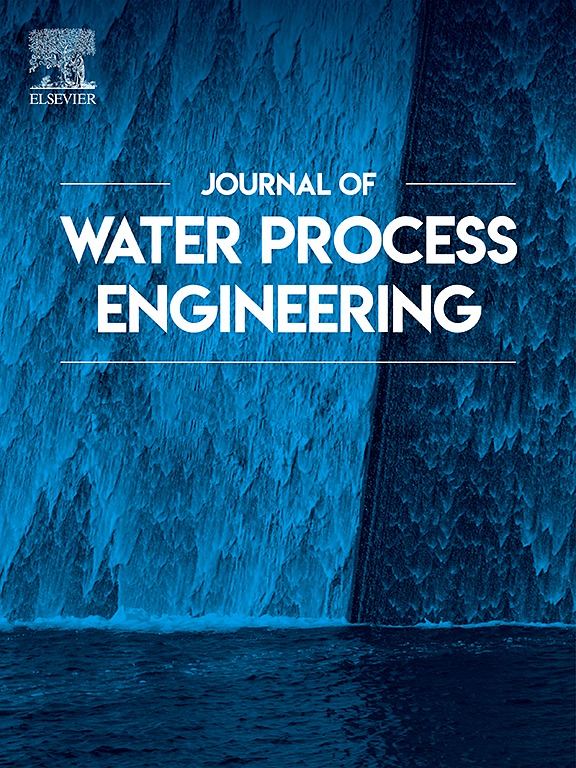A comprehensive synergistic study of process parameters on co-hydrothermal carbonization of digested sewage sludge and sugarcane bagasse: Hydrochar yield, lead adsorption capacity, and physicochemical properties
IF 6.3
2区 工程技术
Q1 ENGINEERING, CHEMICAL
引用次数: 0
Abstract
The hydrothermal carbonization approach applies to waste management, clean water supply, and the creation of valuable materials. An appropriate adsorbent using bagasse and sewage sludge was synthesized via co-hydrothermal carbonization for efficient lead removal. The effect of process parameters on adsorption capacity, hydrochar yield, and synergistic properties was thoroughly examined. Results showed that sensitive positive adsorption synergy occurred at higher sludge/bagasse ratios, while moderate positive and negative yield synergy was achieved at lower and higher temperatures, respectively. Due to the co-hydrothermal carbonization process, the maximum experimental adsorption capacity increased from 105 to 140 mg/g compared to the predicted value. In addition, during the first 10 min of adsorption, mean adsorption speeds of 108 mg/g and 75 mg/g were achieved for experimental and predicted values, respectively. Moreover, at an equilibrium concentration of 0.5 mg/g, the experimental equilibrium adsorption capacity increased from 42.2 to 98.3 mg/g compared to the expected value. This foundational research provides basic information on the adsorption ability of hydrochar in the co-hydrothermal carbonization process and presents an environmentally friendly approach to waste management and clean water supply.

求助全文
约1分钟内获得全文
求助全文
来源期刊

Journal of water process engineering
Biochemistry, Genetics and Molecular Biology-Biotechnology
CiteScore
10.70
自引率
8.60%
发文量
846
审稿时长
24 days
期刊介绍:
The Journal of Water Process Engineering aims to publish refereed, high-quality research papers with significant novelty and impact in all areas of the engineering of water and wastewater processing . Papers on advanced and novel treatment processes and technologies are particularly welcome. The Journal considers papers in areas such as nanotechnology and biotechnology applications in water, novel oxidation and separation processes, membrane processes (except those for desalination) , catalytic processes for the removal of water contaminants, sustainable processes, water reuse and recycling, water use and wastewater minimization, integrated/hybrid technology, process modeling of water treatment and novel treatment processes. Submissions on the subject of adsorbents, including standard measurements of adsorption kinetics and equilibrium will only be considered if there is a genuine case for novelty and contribution, for example highly novel, sustainable adsorbents and their use: papers on activated carbon-type materials derived from natural matter, or surfactant-modified clays and related minerals, would not fulfil this criterion. The Journal particularly welcomes contributions involving environmentally, economically and socially sustainable technology for water treatment, including those which are energy-efficient, with minimal or no chemical consumption, and capable of water recycling and reuse that minimizes the direct disposal of wastewater to the aquatic environment. Papers that describe novel ideas for solving issues related to water quality and availability are also welcome, as are those that show the transfer of techniques from other disciplines. The Journal will consider papers dealing with processes for various water matrices including drinking water (except desalination), domestic, urban and industrial wastewaters, in addition to their residues. It is expected that the journal will be of particular relevance to chemical and process engineers working in the field. The Journal welcomes Full Text papers, Short Communications, State-of-the-Art Reviews and Letters to Editors and Case Studies
 求助内容:
求助内容: 应助结果提醒方式:
应助结果提醒方式:


